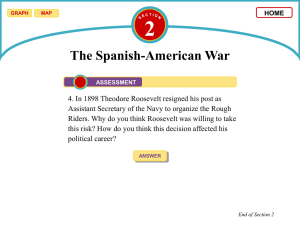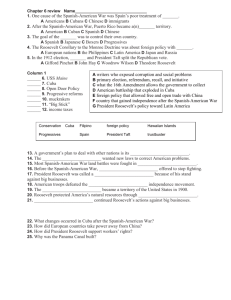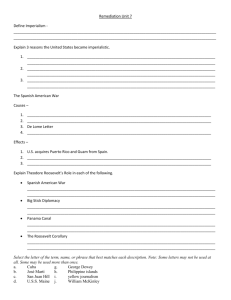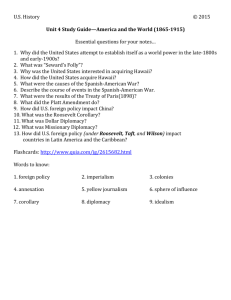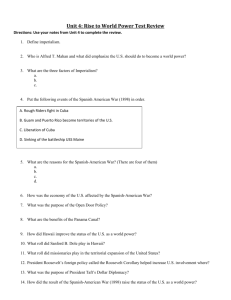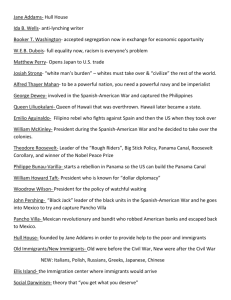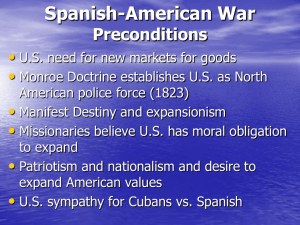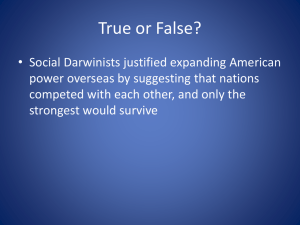File
advertisement
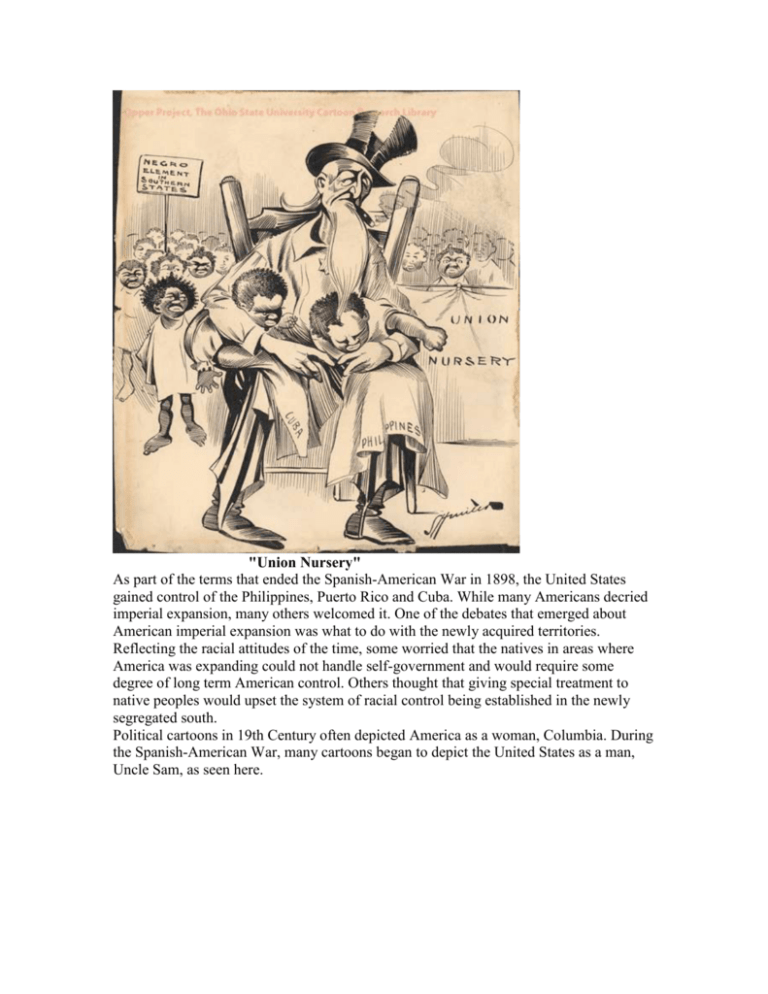
"Union Nursery" As part of the terms that ended the Spanish-American War in 1898, the United States gained control of the Philippines, Puerto Rico and Cuba. While many Americans decried imperial expansion, many others welcomed it. One of the debates that emerged about American imperial expansion was what to do with the newly acquired territories. Reflecting the racial attitudes of the time, some worried that the natives in areas where America was expanding could not handle self-government and would require some degree of long term American control. Others thought that giving special treatment to native peoples would upset the system of racial control being established in the newly segregated south. Political cartoons in 19th Century often depicted America as a woman, Columbia. During the Spanish-American War, many cartoons began to depict the United States as a man, Uncle Sam, as seen here. "This Encounter Does Not Seem, At Present, Exactly A Happy One For Poor Cuba" Stepping across the ocean, the United States and Spain clash over Cuba. In 1895, Cuban revolutionaries began fighting for independence from Spain. The Spanish response was draconian under Spanish General Valeriano (“Butcher”) Weyler. Many Americans wanted to help the Cubans, both because they supported independence for the island and because they believed an independent Cuba would prove to be a better trade partner for the United States. When the U.S.S. Maine blew up in Havana harbor in 1898, the Spanish were blamed, and the US and Spain went to war. Political cartoons in 19th Century often depicted America as a woman, Columbia. During the Spanish-American War, many cartoons began to depict the United States as a man, Uncle Sam, as seen here. Note that this cartoon was originally published in the German magazine Kladderadatsch on April 24, 1898. "Uncle Sam’s New Class in the Art of Self-Government" As part of the terms that ended the Spanish-American War in 1898, the United States gained control of the Philippines, Puerto Rico and Cuba. While many Americans decried imperial expansion, many others welcomed it. One of the debates that emerged about American imperial expansion was what to do with the newly acquired territories. Reflecting the racial attitudes of the time, some worried that the natives in areas where America was expanding could not handle self-government and would require some degree of long term American control. In this cartoon, Uncle Sam is using a switch to separate unruly children in a classroom labeled a “Cuban Ex-patriot” and a “Guerilla.” One of Cuba’s revolutionary figures, Jose Miguel Gomez sits to the side, while Filipino Insurrectionist Emilio Aguinaldo stands in the corner wearing a dunce cap. Sitting together on the right are two well-behaved little girls, Puerto Rico and Hawaii, which became a US territory in July 1898, the culmination of several years of debate independent from the Spanish-American conflict. "A Fair Field and No Favor! Uncle Sam: 'I'm Out For Commerce, Not Conquest.” At the end of the 19th century, China began to open its borders to foreigners. Leaders of the industrial and imperial nations of Europe were very interested in access to China’s markets and raw materials. Government and business interests in the United States shared similar interests, but advocated a different, more conciliatory approach, as illustrated by this cartoon. “Peace” President Theodore Roosevelt, former Assistant Secretary of the Navy, was a staunch supporter of a strong navy. Roosevelt instituted a new policy known as Corollary of the Monroe Doctrine during his term. The Monroe Doctrine was designed keep Europeans out of the Americas, but the Roosevelt Corollary placed the United States as the chief and guardian of the Americas. Control of the seas was an important part of that doctrine, a control made possible because industrialization had sped up process of making battleships. Political cartoons in 19th Century often depicted America as a woman, Columbia. Here she is depicted in full war regalia. During the Spanish-American War, many cartoons began to depict the United States as a man, Uncle Sam. "Roosevelt As the Rising Sun of Yankee Imperialism" As part of the terms that ended the Spanish-American War in 1898, the United States gained control of the Philippines, Puerto Rico and Cuba. While many Americans decried imperial expansion, many others welcomed it. President Theodore Roosevelt, especially, was an advocate for a more aggressive US foreign policy and for American imperial expansion. This cartoon presents a Spanish view of the new American Imperialism. "President Roosevelt’s Forthcoming Feast" This cartoon from a newspaper in Chile is a response to the Roosevelt Corollary to the Monroe Doctrine. The Monroe Doctrine was designed keep Europeans out of the Americas. President Theodore Roosevelt’s Corollary declared the United States as the head and enforcer of the Americas. The cartoonist depicts Roosevelt standing in front of the “Casa Blanca” (White House) and preparing to slaughter a large turkey with feathers labeled with South and Central American countries. The chopping block is labeled “America para los Americanos” (America for the Americans).

